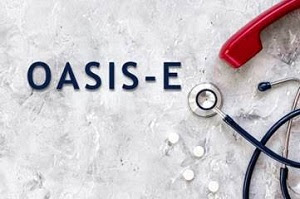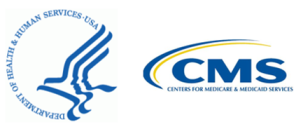 November is a National Home Care and Hospice month! Amity Healthcare Group would like to thank all home care and hospice professionals- caring and dedicated nurses, home care aides, therapists, and social workers- who make a difference in the lives of the patients and families every day.
November is a National Home Care and Hospice month! Amity Healthcare Group would like to thank all home care and hospice professionals- caring and dedicated nurses, home care aides, therapists, and social workers- who make a difference in the lives of the patients and families every day.Amity’s News!
The annual 2023 NAHC conference was a success! Three days filled with meeting industry leaders and providers, education, and meaningful conversations.



OASIS -E Corner
There are several questions that were brought up by our clients this week that we wanted to share with you. The responses to the questions are from the OASIS Q&A below.

Q10. What if the patient refuses a visit during the 5-day recert window? [Q&A EDITED 09/09]
![]()
A10. Most patients are willing to receive a visit if the visit schedule and required time points have been explained to them during the episode. In addition, PPS requires a visit during the same ‘window’ for the agency to receive continued reimbursement for a specific Medicare patient. If the HHA is completely unable to schedule a visit during this period, the follow-up assessment should be completed as soon after this period as possible.
Although it is not explicitly spelled out in the CoP, the expectation that accompanies the requirement to update the comprehensive assessment between days 56 & 60 is that the orders for the ensuing 60 days will be based on the results of that assessment. The patient’s care orders essentially expire at the end of day 60, so day 61 begins a new
payment episode. The agency should be aware of potential legal issues associated with completing the assessment late, considering that the agency may not have orders for visits after the end of the 60-day period. If the patient is a Medicare patient, you should discuss any payment-related issues with Medicare Administrative Coordinator (MAC).
Q11. If an agency misses the recertification assessment window of day 56-60, yet continues to provide skilled services to the Medicare patient, is the agency required to discharge and readmit the patient? Or could the agency conduct the RFA 4 assessment late? Will any data transmission problems be encountered?
A11. When an agency does not complete a recertification assessment within the required 5 day window at the end of the certification period, the agency should not discharge and readmit the patient. Rather, the agency should send a clinician to perform the recertification assessment as soon as the oversight is identified. The date assessment completed (M0090) should be reported as the actual date the assessment is completed, with documentation in the clinical record of the circumstances surrounding the late completion. A warning message will result from the non-compliant assessment date, but this will not prevent assessment transmission. No time frame has been set after which it would be too late to complete this late assessment, but the agency is encouraged to make a correction or complete a missed assessment as soon as possible after the oversight is identified. Obviously, this situation should be avoided, as it does
demonstrate non-compliance with the comprehensive assessment update standard (of the Conditions of Participation). For the Medicare PPS patient, payment implications may arise from this missed assessment. Any payment implications must be discussed with the agency’s Medicare Administrative Coordinator (MAC).
If you have not had a chance to do so yet please review October 2023 OASIS Q&A HERE
NATIONAL NEWS
CMS CY 2024 Home Health Final Rule

The Centers for Medicare and Medicaid Services (CMS) released the CY 2024 Home Health Final Rule on November 1, 2023. The rule includes decisions regarding Medicare home health services payment rates for CY 2024 as well as a number of other proposals
![]()
Below, you will find a summary of primary areas of the CY 2024 Home Health Final Rule:
Medicare Payments
CMS finalized a permanent prospective payment adjustment to the CY 2024 home health 30-day period payment rate. The finalized -2.890 percent permanent adjustment is half the full permanent adjustment of -5.779 percent (-5.653 percent in the proposed rule). As a result of CMS finalizing roughly half of the full permanent adjustment projected, Medicare payments to HHAs in CY 2024 will increase in the aggregate by 0.8 percent, rather than a 2.2 percent decrease as initially proposed. The Final Rule, the net inflation update is set at 3.0% (3.3% Market Basket Index – 0.3% Productivity Adjustment).
The outcome of these payment rate changes on 30-day period base rates and per-visit LUPA rates is as follows.
(HHAs that failed to provide required quality data have these rates reduced by two percent)


In response to rate changes, NAHC President William A. Dombi stated, “We continue to strenuously disagree with CMS’s rate setting actions, including the budget neutrality methodology that CMS employed to arrive at the rate adjustments. We recognize that CMS has reduced the proposed 2024 rate cut. However, overall spending on Medicare home health is down, 500,000 fewer patients are receiving care annually since 2018, patient referrals are being rejected more than 50% of the time because providers cannot afford to provide the care needed within the payment rates, and providers have closed their doors or restricted service territory to reduce care costs. If the payment rate was truly excessive, we would not see these actions occurring. The fatally flawed payment methodology that CMS continues to insist on applying is having a direct and permanent effect on access to care. When you add in the impact of shortchanging home health agencies on an accurate cost inflation update of 5.2% over the last two years, the loss of care access is natural and foreseeable.”
Disposable Negative Pressure Wound Therapy (dNPWT)
The Consolidated Appropriations Act, (CAA) 2023 included technical amendments for the payment of dNPWT. The Act modifies the methods for calculating separate payments for dNPWT devices for each of the next three years. Additionally, beginning January 1, 2024, nursing and therapy visits provided for dNPWT will be billed separately on the home health claim type of bill (TOB) 32x. Beginning in calendar year (CY) 2024 and each subsequent year, claims for the separate payment amount of an applicable dNPWT device using Healthcare Common Procedure Coding System (HCPCS) code A9272 would be reported on claims submitted using the TOB 32x. That is, claims with a date of service on or after January 1, 2024 for an applicable dNPWT device will no longer be submitted on TOB 34X. CMS will be issuing billing instructions…
Home Health Value-Based Purchasing Program (HHVBP)
For the expanded HHVBP Model, CMS is finalizing its proposals to:
- Codify in the Code of Federal Regulations the measure removal factors finalized in the CY 2022 HH PPS final rule;
- Replace the two Total Normalized Composite measures (for Self-Care and Mobility) with the Discharge Function Score measure effective January 1, 2025;
- Replace the OASIS-based Discharge to Community (DTC) measure with the claims-based Discharge to Community-Post Acute Care (PAC) measure for Home Health Agencies, effective January 1, 2025;
- Replace the claims-based Acute Care Hospitalization During the First 60 Days of Home Health Use and the Emergency Department Use without Hospitalization During the First with 60 Days of Home Health measures with the claims-based Potentially Preventable Hospitalization measure effective January 1, 2025;
- Change the weights of individual measures due to the change in the total number of measures; and
- Beginning with performance year CY 2025, update the Model baseline year to CY 2023 for all applicable measures in the finalized measure set, including those measures included in the current measure set with the exception of the 2-year DTC-PAC measure, which would be CY 2022 and CY 2023.
All changes to the measure set begins with the CY 2025 performance year, thus all changes will affect the payment year beginning with the CY 2027 payment year.
In addition, CMS is finalizing an additional opportunity to request a reconsideration of the annual Total Performance Score (TPS) and payment adjustment and is reminding HHA providers that public reporting of HHVBP performance data and payment adjustments will begin in December 2024.
Home Health Quality Reporting Program (HHQRP)
CMS is finalizing the following measures:
- COVID-19 Vaccine: Percent of Patients/Residents Who Are Up to Date (Patient/Resident COVID-19 Vaccine) measure to the HH QRP beginning with the CY 2025 HH QRP.
- Functional Discharge Score (DC Function) measure to the HH QRP beginning with the CY 2025 HH QRP. HHAs would no longer be required to report a Self-Care Discharge Goal (that is, GG0130, Column 2) or a Mobility Discharge Goals (that is, GG0170, Column 2) on the OASIS beginning with patients admitted on April 1, 2024.
CMS is finalizing the removal of the following measures
- Two OASIS items that are no longer necessary for collection, the M0110 – Episode Timing and M2220- Therapy Needs items.
CMS is finalizing the public reporting of four measures:
- Discharge Function;
- Transfer of Health (TOH) Information to the Provider—Post-Acute Care (PAC) Measure (TOH-Provider);
- Transfer of Health (TOH) Information to the Patient—Post-Acute Care (PAC) Measure (TOH-Patient); and
- COVID-19 Vaccine: Percent of Patients/Residents Who Are Up to Date.
CMS also finalized proposed technical changes to § 484.245(b) that codify our requirement that HHAs must meet or exceed a data submission threshold set at 90 percent of all required OASIS and submit the data through the CMS-designated data submission systems.
Medicare Home Intravenous Immune Globulin (IVIG) Items and Services
The CAA 2023 added coverage and payment of items and services related to administration of IVIG in a patient’s home of a patient with a diagnosed primary immune deficiency disease furnished on or after January 1, 2024
Payment for these items and services is required to be a separate bundled payment made to a supplier for all administration items and services furnished in the home during a calendar day. The standard Part B coinsurance and the Part B deductible will be applied. In addition, the statute states that the separate bundled payment for these IVIG administration items and services does not apply for individuals receiving services under the Medicare home health benefit.
CMS clarified that HHAs must provide home health items and services included on the plan of care either directly or under arrangement and must bill and be paid under the HH PPS for such covered home health services. Thus, if an HHA is unable to furnish the items and services related to the administration of IVIG (as indicated in the plan of care) in the home, they are responsible for arranging these services (including arranging for services in an outpatient facility) and are required to bill these services as home health services under the HH PPS. NAHC will be requesting further clarification regarding this decision.
Provider enrollment
CMS finalized the following revisions to the Medicare provider enrollment requirements:
- § 424.530 Denial of enrollment in the Medicare program. Reapplication timeline changed to 10 years from 3 years. A provider or supplier that is currently subject to a reapplication bar may not order, refer, certify, or prescribe Medicare-covered services, items, or drugs, and Medicare will not pay for services ordered.
- § 424.540(a)(1) change the 12-month time frame to 6 months for deactivations related to non-billing.
- § 424.542 Prohibition on ordering, certifying, referring, or prescribing based on felony conviction.
Resources: Calendar Year (CY) 2023 Home Health PPS Final Ruler (CMS -178-F) and NAHC report.
CMS’ 2023 CMS Health Equity Confidential Feedback Reports Live Q&A

Some of you might have already had a chance to review your organization’s Health Equity Confidential Feedback Reports that were MDS Consultants | LinkedIn released on October 16, 2023 and are available for review on iQIES.
![]()
Please note that on November 16, 2023 at 2:00 p.m. ET, the Centers for Medicare & Medicaid Services (CMS) will host a live Q&A session regarding the Health Equity Confidential Feedback Reports released on October 16, 2023.
CMS also encourages participants to prepare for the Live Q&A Webinar by reviewing the October 16, 2023 Online Webinar recording, with slides, a transcript, and a Fact Sheet providing an overview of the Health Equity Confidential Feedback Reports available in the “Downloads” section on the Home Health Quality Reporting Training & Education webpage.
Help Improve Home Health, Hospice Patient & Family Satisfaction

NAHC and BerryDunn have announced the launch of a research study and quality improvement project aimed at helping home health and hospice agencies improve patient and family satisfaction.
The Patient and Family Satisfaction Quality Improvement Project will be led by BerryDunn’s team of home health and hospice researchers and consists of two phases.
- The first is a six-month qualitative research program designed to help agencies build retention while implementing a person-centered model of care.
- The second will focus on survey collection and data monitoring to collect best practices metrics for satisfaction improvement.
This is a limited opportunity. For phase one, BerryDunn is inviting 100 agencies to participate in a six-month education program focused on building caregiver skills in person-centered care as well as supervisory training in employee engagement and retention. The project combines one-on-one consulting with leading industry experts and robust online education modules. Through our research collaboration, agencies that use CAHPS services through SHP will have their scores sent automatically prior to and after the project for more streamlined analysis.
What is included
Participating agencies will receive:
- A consulting call with agency leadership to review current CAHPS and employee engagement/turnover scores, and discuss areas of improvement
- Employee course: Building a culture of exceptional customer experience
- Caregiver course: Person-centered care (PCC) to improve patient satisfaction
- Optional PCC mentorship program for caregivers
- Supervisor course: Supervising for improved employee engagement
- Comprehensive training materials
- Six hours of consultation to discuss progress and next steps
- At the conclusion of the six months, a comprehensive report and future roadmap
- Six additional months of monitoring agency metrics
Participation fee
The cost to participate in this study and receive the six-month education program and materials is $2,500, with a discounted fee for additional sites. The project began on October 23, 2023.
Sign up today
It is anticipated that this program will fill quickly, so GO HERE to register today to secure your spot. If you’d like more information, contact Lindsay Doak, Senior Manager and Director of the National Healthcare at Home Best Practices and Future Insights Study at ldoak@berrydunn.com.
COLORADO NEWS
Home Health Billing Information Manual

Please note that the Colorado Department of Health Care Policy and Financing (HCPF) has recently updated Home Health Billing Information Manual and added the Ordering, Prescribing, Referring (OPR) Policy.
To review the updated billing manual, please go HERE.
Amity’s newsletters will be archived on Amity’s Healthcare Group website at https://amityhealthcaregroup.
Please do not hesitate to reach out for any assistance or questions via email, phone, or website at https://amityhealthcaregroup.
If you wish to forward this email to your colleague or friend, please feel free to do so. If you received this message as a forward, we invite you to subscribe to our communications at https://amityhealthcaregroup.
Thank you,
Irina Gorovaya, RN BSN, MBA
Amity Healthcare Group, LLC
Home Health Consulting, Education and Outsourcing Services
720-353-7249 (cell) 303-690-2749 (office) 720-398-6200 (fax)
www.amityhealthcaregroup.com


Amity Healthcare Group
Centennial, CO 80112

